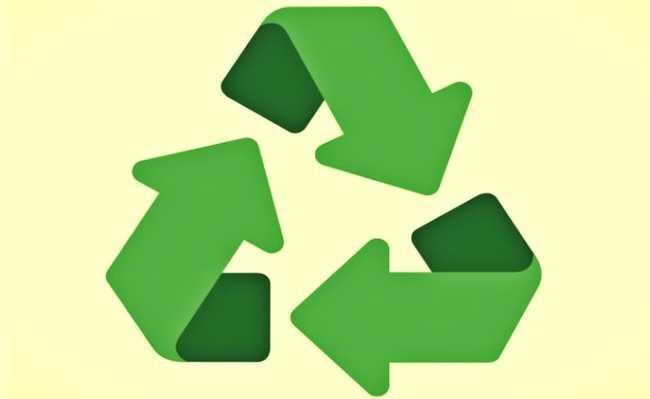Entrevista concedida pela FUNVERDE para a revista HM! sobre as malditas sacolas plásticas de uso…
Turbina eólica sem hélice aproveita 80% mais energia

Um novo modelo de usina eólica foi construído pela empresa da Tunísia Saphon Energy. O diferencial dela está em aproveitar 80% mais a energia do vento do que as convencionais, mesmo não tendo hélices.
Intitulada Saphonian, a tecnologia é inspirada nas velas dos barcos. O modelo captura a energia cinética do vento e converte-a em elétrica através de pistões e hidráulica. Para realizar este processo o disco é posicionado contra o vento que, com sua força, causa oscilações no aparelho.
O movimento provocado pelo vento é transferido para os pistões que podem ser ligados a um acumulador ou gerador. No primeiro caso seria apenas para guardar energia já a segunda opção seria útil caso houvesse necessidade de eletricidade instantaneamente.
Uma das vantagens desta usina é que ela é completamente silenciosa, portanto não incomoda algumas espécies de pássaros. Além disso, sua construção é mais barata e mais fácil de manter. Essas características fazem com que os custos sejam menores para o consumidor tanto na hora de comprar, como na conservação.
“Nosso protótipo de segunda geração é 2,3 vezes mais eficiente, e custa cerca de metade do preço das turbinas eólicas convencionais, pois descarta (na construção do modelo) os componentes mais caros”, afirmou o executivo-chefe da Saphon Energia, Hassine Labaied, à Organização Scidev de ciência e tecnologia.
A eficiência da Saphonian representa uma economia geral de 45% em custos diversos relacionados com infraestrutura. A Saphon Energy já conseguiu patentear o modelo, e está agora em fase de captação de recursos para que o produto seja comercializado em até dois anos.
“Estamos negociando com um número de empresas internacionais que produzem tecnologia de energia renovável”, disse Labaied. A companhia está tentando fazer uma parceria com um fabricante para que seja possível distribuir o modelo mundialmente. Com informações do Techtudo.
Fonte – CicloVivo de 14 de novembro de 2012
***
Sail-inspired wind turbine doubles efficiency without blades
We know that there’s more than enough wind energy out there to power our entire civilization, but conventional wind turbines don’t do that great of a job of harnessing it. They’re expensive and inefficient, and we’re looking for better technologies, one of which is a super efficient wind turbine that doesn’t need blades.
It looks like some sort of flat satellite dish-thing, but this is Saphon Energy’s wind non-turbine, the Saphonian. It doesn’t have blades, and nothing on it spins: it just sits there, pointing into the wind, and captures energy. The design is based on sails, the kind that pull boats around, which are very efficient (and have been for thousands of years) at turning wind energy into usable mechanical energy.
Instead of harvesting wind energy with rotating blades, the Saphonian uses a sort of round sail held in a frame. As wind pushes on the sail, it oscillates in “a non-rotational back and forth motion,” driving small pistons as it does so. The pistons are hooked up to a hydraulic system, which can either store energy via an accumulator, or convert it directly into electricity with a generator. There’s no transmission, no gearbox, and the thing barely moves and is almost completely silent. At the same time, however, it’s able to generate energy 2.3 times more efficiently than a traditional bladed turbine (harvesting up to 80% of available wind energy) while saving 45% or more on infrastructure cost. Not too shabby.
Saphon got a patent on this design earlier this year, and it’s currently looking to partner up with a manufacturer for worldwide distribution. So far, we’re not seeing any downsides here, except that abandoning the traditional bladed design means that we no longer have the option of reversing all of the world’s wind turbines to slow the rotation of the Earth on special occasions like my birthday. Oh well.
Fonte – Saphon
A Tunisian invention that harvests wind energy through adesign inspired by sailboats promises cheaper, more efficient wind energy.
The bladeless wind turbine, the Saphonian, named after the wind divinity that was worshipped by the ancient Carthaginians, also promises to be more environmentally friendly than existing wind turbines that produce noise and kill birds through their blade rotation.
Instead of rotating blades, the Saphonian’s sail-shaped body collects the kinetic energy of the wind, Anis Aouini, the Saphonian’s inventor, told SciDev.Net.
He explained that the resulting mechanical energy moves pistons which generate hydraulic pressure that can be stored in a hydraulic accumulator or converted into electricity.
“This is not the first bladeless wind turbine, but we thought outside the box: the initial idea came from sails — the only human system that can capture and convert the bulk of the wind’s power into mechanical energy,” said Aouini.
An average wind turbine captures only 30 to 40 per cent of the wind’s kinetic energy, while the Saphonian can capture up to 80 per cent, according to Aouini.
Hassine Labaied, chief executive of Saphon Energy, the start-up energy company established to get the turbine to market, said the Saphonian reduces the aerodynamic and mechanical energy losses associated with rotating-blade turbines.
“Our second generation prototype is 2.3 times more efficient, and costs nearly half the price of its predecessors [conventional wind turbines]. It discards the most expensive components in a traditional wind turbine, which are the blades, hub and gearbox,” said Labaied.
Aouini and Labaied patented the technology in Tunisia in September 2010, and received an international patent in March 2012. Saphon Energy is now looking for a partnership with a manufacturer to deploy the technology worldwide.
“We are negotiating with a number of international companies that produce renewable energy technology, and will finalise this by the end of this year,” said Labaied. He estimated that it would take up to two years until the commercial product reaches the market.
Ali Kanzari, a renewable energy expert and director-general of Solar Energy Systems, told SciDev.Net that the Saphonian “seems to be a radical and economically viable alternative to bladed turbines”. However, he added that “the manufacturing step is important as it will determine how the market will accept it”.
“The electricity produced through wind in Tunisia represents five per cent of total electricity production in the country,” Ayadi Ben Aissa, former chief executive of the Tunisian Society of Electricity and Gas (STEG), told SciDev.Net.
He said that using the Saphonian technology could produce up to 20 per cent of Tunisia’s electricity from wind in the medium term.
Fonte – Scidev de 05 de novembro de 2012




Este Post tem 0 Comentários